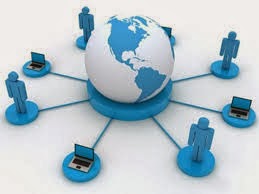The Internet is defined as a “global network of computers”
which is used to communicate with other individuals as near as the next room or as far away as the other side of the world. The Internet provides users with the ability to share information and conduct all types of personal and business transactions ranging from buying products to paying bills and conducting bank transactions to e-filing Court documents from anywhere Internet access is available.
The Internet is defined as a “global network of computers” which is used to communicate with other individuals as near as the next room or as far away as the other side of the world. The Internet provides users with the ability to share information and conduct all types of personal and business transactions ranging from buying products to paying bills and conducting bank transactions to e-filing Court documents from anywhere Internet access is available.
Individuals and businesses access the Internet through various types of connections known as dial-up, digital subscriber line (DSL), asymmetric DSL (ADSL), cable, fixed wireless, satellite, microwave, Wi-Fi and mobile wireless. The primary basis for the type of connection is picked by an individual is the transmission speed of uploading and downloading data and/or how much they can afford to pay for this service.
The first computer network known as ARPANET was launched in
1966 by its developers at the Department of Defense’s Advanced Research
Projects Agency. The
proposal was to use “packet switches” to transmit data between computers to
replace the current method of sending data in a continuous stream over a
dedicated circuit. To accomplish the
proposed idea, the data was separated into packets by the transmitting computer
then transmitted in packets over the cables and reassembled on the receiving
computer.
In addition, the
Internet was founded on the following three other concepts: Military Network by the Rand Corp. in America;
the Commercial Network by National Physical Laboratory (NPL) in England, and
the Scientific Network by Cyclades in France.
Initially, computers were connected using the Network Control Protocol
(NCP) which was then replaced by the TCP (Transmission Control Protocol) which
verified the transmission of a file transfer.
The Internet Protocol (IP) “addressed” and sent the file packets was utilized. In 1990, TCP/IP became the standard to be
used by all computers because it guaranteed compatibility between networks and
merged them, thereby, creating the Internet.
 |
| Browser Symbols |
References:
Internet Image:
Retrieved from: http://www.specialeyes.co.nz/category/internet-marketing/
Browser Image.
Retrieved from: http://blog.hostbaby.com/2010/01/own-a-website-use-more-than-one-browser/
